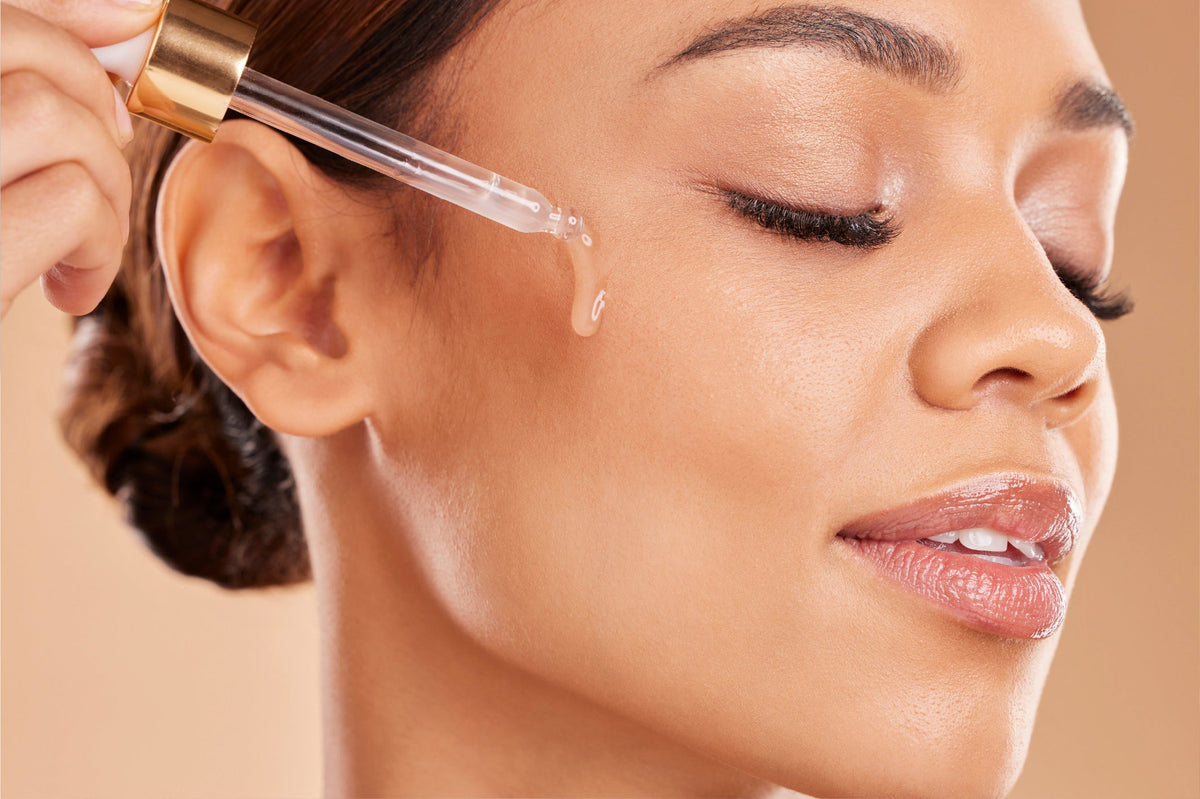
When it comes to skin-brightening ingredients, L-Ascorbic Acid is hard to beat. It’s not just a buzzword—it’s the most potent form of Vitamin C, and it plays a proven role in improving skin tone, texture, and resilience.
If you’re serious about building a results-driven routine, here’s what you need to know about what L-Ascorbic Acid does for your skin, how it works, and how to use it correctly.
What Is L-Ascorbic Acid and Why Does It Matter for Skin?
First, let’s answer the common question: Which vitamin is also known as Ascorbic Acid? That’s Vitamin C. And in skincare, L-Ascorbic Acid is its most potent form.
Unlike gentler derivatives that require conversion within the skin, L-Ascorbic Acid is immediately bioavailable. That means faster results and more visible changes in pigmentation, Collagen levels, and overall skin clarity.
What Is L-Ascorbic Acid in Skincare?
You’ll typically find L-Ascorbic Acid in serums. These water-based formulas deliver a high concentration of Vitamin C directly into the skin.
Compared to stable but less potent forms like Sodium Ascorbyl Phosphate, L-Ascorbic Acid is more meticulous—and more effective. It’s usually formulated at a low pH (around 3.0) to enhance absorption and reduce degradation.
That said, it’s also unstable. Exposure to light, heat, or air can cause it to oxidize. For that reason, it’s often paired with Vitamin E and Ferulic Acid, both of which improve stability and enhance antioxidant performance.
L-Ascorbic Acid Benefits for Skin
Wondering what L-Ascorbic Acid does for skin? Here’s what it delivers when used regularly:
1. Brightens skin tone
It helps reduce melanin production, making dull or uneven areas appear clearer and more uniform.
2. Reduces dark spots and pigmentation
By inhibiting Tyrosinase, an enzyme involved in melanin formation, it targets hyperpigmentation and post-acne marks.
3. Boosts Collagen production for anti-aging benefits
Your skin needs Vitamin C to produce collagen. Over time, it improves firmness and reduces the look of fine lines.
4. Protects against environmental damage
As a strong antioxidant, it neutralizes free radicals from UV rays, pollution, and daily stressors.
How L-Ascorbic Acid Works Within the Skin
L-Ascorbic Acid works best at low pH levels because that allows it to penetrate the skin barrier and reach the deeper layers. Once absorbed, it interacts with pigment-producing cells and Collagen-forming fibroblasts.
This is why it’s often recommended for morning use—applying it under sunscreen strengthens your skin’s defense against UV damage and pollution throughout the day.
What Does L-Ascorbic Acid Do for Skin Over Time?
Used consistently, L-Ascorbic Acid gradually improves skin tone, smoothness, and elasticity. Pigmentation fades, fine lines soften, and the skin looks fresher and more even.
For visible results, apply it once daily in your morning routine. It works even better when paired with a high-SPF sunscreen.
How to Use L-Ascorbic Acid in Your Skincare Routine
Here’s the ideal order:
1. Cleanse your skin with a mild, non-stripping cleanser.
2. Apply L-Ascorbic Acid serum on dry skin.
3. Follow with a lightweight moisturizer.
4, Finish with broad-spectrum SPF—a critical step when using actives that target pigmentation.
Avoid layering it with strong acids (like AHAs or BHAs) unless your skin is used to them. You can still use exfoliants—just not in the same routine.
What to Know Before You Start Using L-Ascorbic Acid
Possible Side Effects and How to Avoid Them
L-Ascorbic Acid may cause a tingling sensation or mild irritation, especially in sensitive skin or at higher concentrations.
To prevent discomfort:
1. Start with alternate-day use
2. Patch test before full application
3. Look for formulas that include hydrating or barrier-repairing ingredients
If persistent redness occurs, switch to a lower percentage or try a buffered derivative.
Tips to Preserve Potency of Ascorbic Acid Serums
Since L-Ascorbic Acid is unstable, proper storage matters.
1. Keep it in a cool, dark space away from sunlight
2. Use products packaged in air-tight, tinted bottles
3. Stop using if the color changes to dark orange or brown—this means it has oxidized
Fresh Vitamin C is usually clear to pale yellow depending on formulation.
Final Thoughts on the Benefits of L-Ascorbic Acid for Skin
If your skincare goals include fewer dark spots, firmer skin, and better protection against environmental stress, L-Ascorbic Acid is a must-have. It’s clinically proven, widely trusted, and effective when used correctly.
But the results come with consistency. Use it daily, store it properly, and always follow up with sunscreen. When paired with barrier-supporting ingredients, L-Ascorbic Acid can help you build skin that’s brighter, stronger, and more resilient over time.
FAQs
What is L-Ascorbic Acid and how does it differ from Vitamin C?
L-Ascorbic Acid is Vitamin C in its purest form. It works faster and more efficiently than derivatives that need to convert inside the skin.
Which Vitamin is also known as Ascorbic Acid?
Vitamin C is also known as Ascorbic Acid. In skincare, "L-Ascorbic Acid" refers to the most potent version.
How often should I use L-Ascorbic Acid on my skin?
Once daily in the morning is ideal. If you’re new to it, start with every other day and build up.
What are the signs that my serum has expired or oxidized?
If it turns dark orange or brown, or starts to smell metallic, it’s time to stop using it.
Can I use L-Ascorbic Acid with Retinol or AHA/BHA?
You can, but not in the same routine unless your skin is well-conditioned. Use Vitamin C in the morning and retinol or exfoliants at night.



